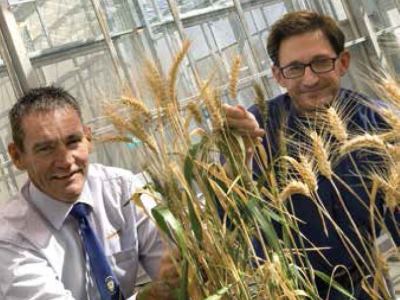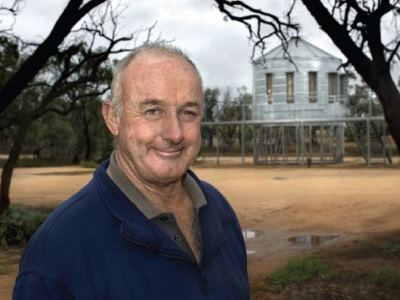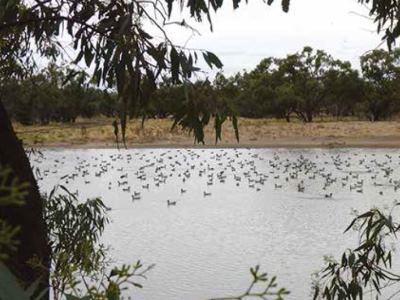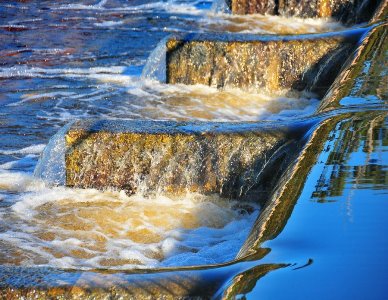- Details
There are many benefits of connecting to a reliable and secure rural piped water supply, such as:
- Improved water quality that's not exposed to contaminants en-route or through surface runoff
- Better quality water for bathing and washing than many dams
- Usable life of home appliances, such as hot water services and washing machines, is generally extended due to reduced impurities in the water
- Not having to rely on rainwater tanks or water carting
- Access to stored water for fire-fighting
- Clean and plentiful water for pets, chickens, horses and other birds and animals
- Appreciation of property values
- Drought proofed properties
Additionally for farms:
- Improved effectiveness of herbicides and chemicals for crop spraying
- Superior results have been achieved with stock in pipeline areas
- Greater opportunity for diversification of farming operations and development of niche enterprises
- Water available to all parts of the property, irrespective of dam locations
Read some case studies about how piped water has benefited landholders in our community.
- Details
|
29 September 2016 |
|
29 September 2016 |
|
29 September 2016 |
|
16 September 2016 |
- Details
GWMWater is a water supplier within the terms of the Safe Drinking Water Act 2003, which provides a legislative framework for assuring drinking water quality in Victoria.
We work hard to provide as many of our customers as possible with access to safe, high-quality drinking water that consistently meets consumer and regulatory requirements. Our region has 18 water treatment plants that supply treated water to 89 percent of our urban customers.
Use the table below to find out how your drinking water is treated.
| Town | Treatment process | Chemicals used in treatment process |
| Ararat |
Coagulation, flocculation, dissolved air flotation, filtration, disinfection, fluoride, pH correction |
Lime, potassium permanganate, powdered activated carbon, aluminium sulphate, chlorine, fluorosilicic acid |
|
Birchip |
Coagulation, flocculation, dissolved air flotation, filtration, disinfection, pH correction |
Sulphuric acid, polyaluminium chloride, chlorine |
|
Charlton |
Coagulation, flocculation, dissolved air flotation, filtration, disinfection, pH correction |
Sulphuric acid, polyaluminium chloride, chlorine |
|
Dimboola |
Coagulation, flocculation, dissolved air flotation, filtration, disinfection, pH correction |
Sodium hydroxide, aluminium sulphate, chlorine |
| Donald |
Coagulation, flocculation, dissolved air flotation, filtration, disinfection, pH correction (receives water from St Arnaud) |
Aluminium sulphate, sodium hydroxide, chlorine |
| Edenhope |
Coagulation, flocculation, dissolved air flotation, filtration, desalination, disinfection |
Polyaluminium chloride, chlorine |
| Great Western |
Microfiltration, disinfection, pH correction |
Sulphuric acid, polyaluminium chloride, sodium hydroxide, chlorine |
| Halls Gap |
Coagulation, flocculation, dissolved air flotation, filtration, disinfection, pH correction |
Lime, aluminium sulphate, chlorine |
| Hopetoun |
Coagulation, flocculation, dissolved air flotation, filtration, desalination, disinfection, pH correction |
Soda ash, aluminium sulphate, chlorine |
| Horsham |
Coagulation, flocculation, dissolved air flotation, filtration, disinfection, fluoridation, pH correction (receives water from Horsham, Mt Zero) |
Lime, aluminium sulphate, chlorine, carbon dioxide, fluorosilicic acid |
| Jeparit |
Coagulation, flocculation, dissolved air flotation, filtration, desalination, disinfection, pH correction (receives water from Rainbow) |
Sulphuric acid, polyaluminium chloride, soda ash, chlorine |
| Lake Bolac |
Microfiltration, disinfection- receives water from Willaura |
Soda ash, calcite, aluminium sulphate, hydrochloric acid, sodium hypochlorite, carbon dioxide, ammonia, chlorine |
| Manangatang |
Disinfection, AMIAD filtration |
Ultrion 44560 Coagulant, chlorine |
| Minyip |
Coagulation, flocculation, dissolved air flotation, filtration, disinfection, pH correction (receives water from Murtoa) |
Sodium hydroxide, aluminium sulphate, chlorine |
| Murtoa |
Coagulation, flocculation, dissolved air flotation, filtration, disinfection, pH correction |
Sodium hydroxide, aluminium sulphate, chlorine |
| Natimuk |
Coagulation, flocculation, dissolved air flotation, filtration, disinfection, fluoridation, pH correction (receives water from Horsham, Mt Zero) |
Lime, aluminium sulphate, chlorine, carbon dioxide, fluorosilicic acid |
| Nhill |
Coagulation, flocculation, dissolved air flotation, filtration, disinfection, pH correction (receives water from Dimboola) |
Sodium hydroxide, aluminium sulphate, chlorine |
| Ouyen |
Microfiltration, disinfection |
Polyaluminium chloride, chlorine |
| Pomonal |
Coagulation, flocculation, dissolved air flotation, filtration, disinfection, pH correction (receives water from Halls Gap) |
Lime, aluminium sulphate, chlorine |
| Quambatook |
pH correction, coagulation, flocculation, dissolved air floatation, media filtration, carbon filtration, disinfection |
Sulphuric Acid, aluminium chlorohydrate, chlorine |
| Rainbow |
Coagulation, flocculation, dissolved air flotation, filtration, desalination, disinfection, pH correction |
Sulphuric acid, polyaluminium chloride, soda ash, chlorine |
| Rupanyup |
Coagulation, flocculation, dissolved air flotation, filtration, disinfection, pH correction (receives water from Murtoa) |
Sodium hydroxide, aluminium sulphate, chlorine |
| Sea Lake |
Disinfection |
Chlorine |
| St Arnaud |
Coagulation, flocculation, dissolved air flotation, filtration, disinfection, pH correction |
Aluminium sulphate, sodium hydroxide, chlorine |
| Stawell |
Coagulation, flocculation, dissolved air flotation, filtration, disinfection, pH correction |
Carbon dioxide, sodium hypochlorite, lime, aluminium sulphate, chlorine |
| Underbool |
Coagulation, sand filtration, pH correction |
Sulphuric acid, polyaluminium chloride, chlorine |
| Warracknabeal | Coagulation, flocculation, dissolved air flotation, filtration, disinfection, pH correction | Powdered activated carbon, lime, aluminium sulphate, chlorine |
| Willaura |
Microfiltration, disinfection |
Soda ash, calcite, aluminium sulphate, hydrochloric acid, sodium hypochlorite, carbon dioxide, ammonia, chlorine |
| Wycheproof |
Coagulation, flocculation, dissolved air flotation, filtration, disinfection, pH correction (receives water from Charlton) |
Sulphuric acid, polyaluminium chloride, chlorine |
What is the water quality in your town?
GWMWater tests your water quality regularly to ensure that it is fit for purpose.
- Details
GWMWater's Customer Portal is a free online system that allows you to monitor your water use using your smart phone, tablet, laptop or home computer. It's already available to our rural customers and after making some upgrades to the system, the Portal is now available for urban customers. For access to the Customer Portal update your details now.
Water usage data is collected by a remote electronic device installed on your water meter.
This data allows you to:
- monitor your water use anytime
- monitor your water allowance and receive alerts if you're going to exceed it
- be alerted to potential water leaks or high use (via SMS or email)
- create your own alerts, for example, for low water consumption where stock are grazing.
Update your details now for access to the Customer Portal
How the Customer Portal detects potential leaks
Customer Portal monitors the water through your meter over 48 hour periods.
Because, typically, you don't use water all day every day, Customer Portal expects the flow to stop going through the meter at some point during each 48 hour period. If it doesn't and the flow is continuous, an alert maybe triggered. This doesn't mean that you definitely have a leak, rather that a pattern similar to that of a leak has been detected.
If you get a potential leak alert:
- Review your usage over the previous 48 hours - you may have used the water legitimately and may not have a leak at all.
- If you can, isolate sections of your reticulation and observe your meter on Customer Portal to see if you can pinpoint the section with the leak.
- Check tanks and above ground pipe fittings that may be leaking.
- Inspect your on-farm pipe routes and look for wet soil or green patches.
- If you find and repair a leak, keep checking Customer Portal to make sure it's fixed. It’s possible that you may also have more than one leak!



